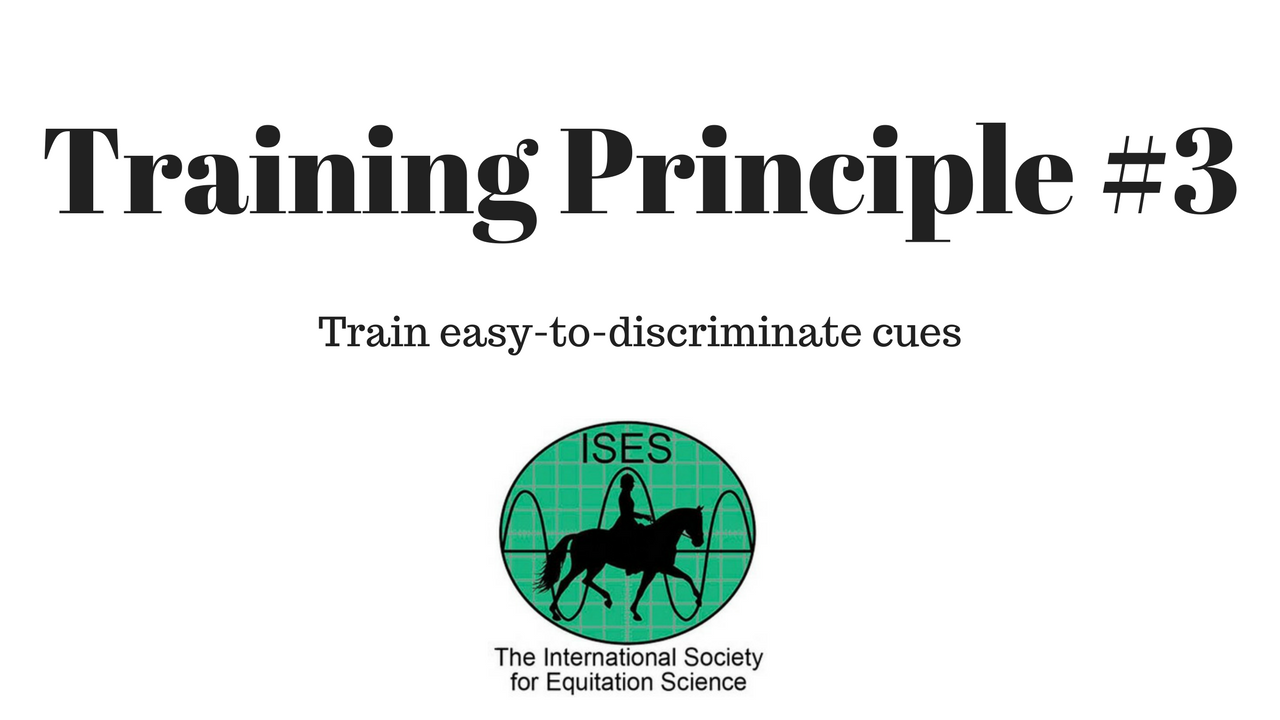
This is a terribly important and easily overlooked training principle - train easy-to-discriminate cues.
The classic example that I see a lot is training the walk-to-canter cue. If we adhere to this principle, our trot and canter cues must be very different so that the horse can easily tell the difference.
Personally, I like my horses to respond to a voice cue and keep the rein, leg and seat as back-ups should I need them. I know, you can't use your voice in dressage but seriously horses have excellent hearing (dressage judges, not so much) and the pitiful amount of time most of us spend in the competitive dressage arena hardly warrants the horse having to put up with heavy pressure cues for the rest of the time.
With this in mind, I use a double cluck for trot and a 'kiss' sound for canter. I begin using these cues the moment I start training the horse - that could be in the round pen as a youngster or long-reining later on. Because the voice cues are taught from the ground, I am better able to enforce them and don't have to resort to using my leg or kicking the horse to move up a gait, I can simply wave the whip behind the horse.
Once I'm ready to ride the canter, I simply 'kiss' and the horse automatically picks up a canter. When I want to teach walk-to-canter, it is easy to do because the horse never hears the distinctive 'double cluck' for trot but has been classically conditioned to respond to the 'kiss' with a canter.
Let's contrast this with less easy-to-distinguish cues. I often find people have trouble getting the walk-to-canter because they don't have a clear canter cue, it's more like a 'go faster' cue. The trouble is, canter is not necessarily faster and if you ask for faster you're likely to get a fast trot. In fact, the horse should respond with a fast trot because a horse in self-carriage will maintain gait until signalled to change gait so if you are trotting and ask for speed the horse is answering correctly by giving you that fast trot (which can be terribly uncomfortable!).
I often ask people, 'what's your canter cue' and they tell me 'cluck-cluck-cluck'. When I ask 'what's your trot cue' the answer is often the same. Of course, you may have a leg cue here, sliding the outside leg back is a popular cue, but personally, I prefer to give the horse the opportunity to respond off a lighter, non-pressure cue first as if you get no response from your pressure cue you can only add pressure and eventually the horse will habituate to greater amounts of pressure and become less and less responsive.
Have you ever ridden a horse that has been unresponsive to leg pressure cues? Leave me a comment below and let me know.
If you'd like this series delivered directly to your inbox, click here.

